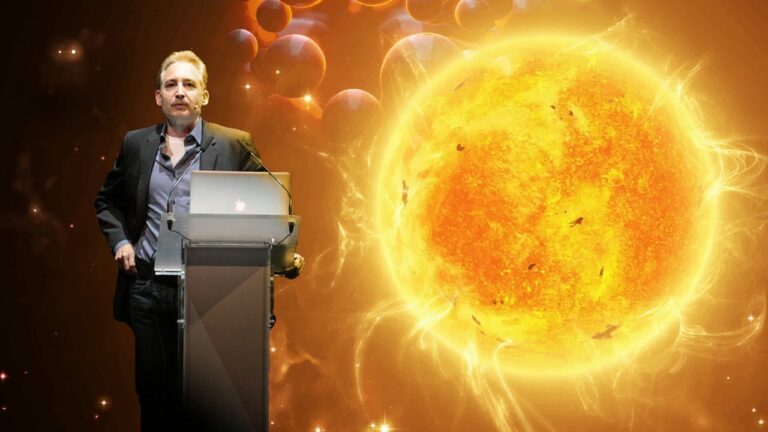Dark Stars, Dark Energy & Gravitons Explained by Brian Greene
Everything you see, everything you ever loved, every object you look at in the night sky, including comets, moons, planets, and stars, are made of ordinary matter. Which consist of only about 5% of the Universe. And that’s the bit of the universe we understand.
The remaining 95% however, we have no idea what it truly is.
But we’ve given this mystery a name. And we know just about enough that it’s two separate things. Dark matter & dark energy.
Theoretical physicist, Brian Greene explains in great detail what we know about dark matter, dark energy and gravitons.
In theories of quantum gravity, the “Graviton” is the hypothetical quantum of gravity, an elementary particle that mediates the force of gravitational interaction.
If gravitons exist, they are expected to be massless because the gravitational force has a very long range, and appears to propagate at the speed of light.
It’s extremely counterintuitive that the vast majority energy distribution in the universe is invisible to us, especially when we gaze the night sky and observe trillions of stars. But there could be also stars that are partially made of dark matter.
The early universe may have harbored so called “dark stars”. These types of cosmic objects would be composed mostly of normal matter, like modern stars, but a high concentration of neutralino dark matter present within them would generate heat via annihilation reactions between the dark-matter particles.
Under this model, a dark star is predicted to be an enormous cloud of molecular hydrogen and helium ranging between 4 and 2,000 astronomical units in diameter and with a surface temperature and luminosity low enough that the emitted radiation would be invisible to the naked eye.
In theories of quantum gravity, the “Graviton” is the hypothetical quantum of gravity, an elementary particle that mediates the force of gravitational interaction.
Do not forget to share your opinion with us to provide you with the best posts !




0 Comments